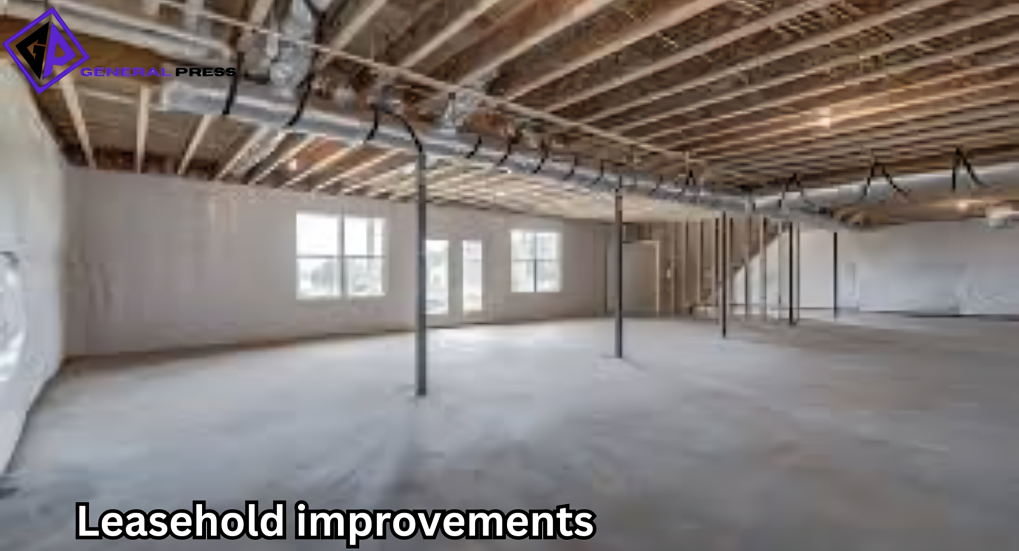When it comes to commercial or residential property leasing, the term “leasehold improvements” frequently comes up. Whether you’re a landlord, a tenant, or a business owner, understanding what leasehold improvements are and how they affect your lease agreement is important. In this article, we will explore what leasehold improvements are, the benefits they offer, and how they fit into the legal and financial landscape of a lease.
What Are Leasehold Improvements?
Leasehold improvements refer to the modifications or alterations made to a rental property to tailor it for the tenant’s specific use or needs. Tenants typically make these improvements, but ownership and the rights to them depend on the terms outlined in the lease agreement. Examples of leaseholds improvements include installing partitions, adding lighting, flooring upgrades, custom-built shelving, or any other structural modifications that enhance the space for the tenant’s purposes.
However, leasehold improvements are distinct from general repairs and maintenance. While repairs are usually the landlord’s responsibility, leasehold improvements are changes that personalize or adapt the space, often for the tenant’s business operations. As such, leaseholds improvements tend to be more substantial and can involve both aesthetic and functional changes to the space.
Why Do Leasehold Improvements Matter?
Also Read: WestJet review: In-depth look at passenger feedback
Leasehold improvements are important because they allow tenants to customize a space to suit their needs, particularly when leasing commercial properties like offices, retail stores, or warehouses. A standard rental property may not fit the exact specifications a tenant needs to run their business efficiently. For instance, a retail store may need customized shelving and display units, while an office may require specific wiring and infrastructure to support its operations.
For landlords, leaseholds improvements can be a way to attract quality tenants. Allowing potential tenants to make alterations to the space may help landlords secure longer-term leases and lease their property more quickly. Offering a customizable property is a selling point, especially in competitive real estate markets.
Who Pays for Leasehold Improvements?
The cost of leasehold improvements can vary significantly depending on the scale and complexity of the modifications. Typically, the tenant will pay for these improvements. However, it is not uncommon for landlords and tenants to negotiate the terms of leaseholds improvements, especially in commercial leases.
In some cases, landlords may provide an allowance for leasehold improvements as an incentive to secure a tenant. This is known as a “tenant improvement allowance” (TIA), a sum of money the landlord agrees to provide to the tenant to help cover renovation costs. The tenant and landlord usually agree on the TIA at the start of the lease, and it will be either a fixed amount or based on the square footage of the leased space.
In other situations, tenants may finance the improvements themselves, and the cost may be factored into the lease’s overall rent structure. A tenant might agree to pay higher rent to account for the upfront investment they’ve made in improving the property. The lease agreement should outline the exact arrangement, including terms like amortization schedules or the possibility of rent credits.
Legal Ownership of Leasehold Improvements
A key question regarding leasehold improvements is who owns them once they are installed. Improvements made by a tenant are, by default, considered part of the property, and ownership typically passes to the landlord at the end of the lease term. However, the tenant may remove certain improvements before leaving, depending on the nature of the improvement and the terms of the lease.
Generally, if tenants consider leasehold improvements “fixtures” — meaning they attach permanently to the property and are necessary for its functionality — tenants must leave them as the landlord’s property once installed. For example, tenants would usually leave built-in shelving or specialized wiring behind when they vacate the premises. On the other hand, movable items such as furniture or equipment may remain the tenant’s property.
A well-drafted lease agreement will specify whether the tenant has the right to remove certain improvements and what happens to the improvements at the end of the lease. It may also address whether the landlord will compensate the tenant for the cost of improvements if the tenant leaves the space before the agreed lease term ends.
Depreciation and Tax Implications
From a financial standpoint, leasehold improvements can have tax implications for both tenants and landlords. In many jurisdictions, leasehold improvements are subject to depreciation, meaning they lose value over time, and this can be claimed as a tax deduction. The depreciation period typically depends on the type of improvement made.
For tenants, leasehold improvements may be considered a capital expense, and they can depreciate the cost of the improvements over the course of the lease, depending on the jurisdiction’s tax rules. This depreciation is important for tax purposes and can potentially reduce the tenant’s overall tax burden.
For landlords, the tax treatment of leasehold improvements depends on the specific lease arrangement. If the landlord contributes to the improvements, they may be able to claim depreciation on the property. Tenants also need to be mindful of how improvements might impact their security deposit, particularly if the lease agreement mandates that the space be returned to its original condition at the end of the lease.
FAQ:
1. What are leasehold improvements?
Leasehold improvements are modifications or enhancements made to a rental property by the tenant to suit their specific needs. These can include changes to the layout, decor, or functionality of the space.
2. Who is responsible for leasehold improvements?
Typically, the tenant is responsible for paying for leasehold improvements, but this can vary depending on the lease agreement. In some cases, landlords may cover the cost or offer financial assistance.
3. Can leasehold improvements be made without landlord approval?
No, leasehold improvements generally require landlord approval. It’s important to check the lease terms and get permission before making any changes to the property.
4. Do leasehold improvements increase the value of the property?
Yes, leasehold improvements can increase the property’s value, especially if they enhance the space’s functionality or appeal. However, the tenant may not own the improvements once the lease ends, unless stated otherwise in the agreement.
5. Are leasehold improvements tax-deductible?
In many cases, tenants can deduct the cost of leasehold improvements as a business expense. However, the specifics depend on the type of improvements and local tax laws, so it’s advisable to consult with a tax professional.
Conclusion
Leasehold improvements are an essential component of leasing agreements, particularly in commercial real estate. They provide tenants with the flexibility to customize a rented space to suit their needs and can be a valuable bargaining tool in negotiations. Whether a tenant is looking to make simple changes or extensive renovations, leasehold improvements help create functional, efficient, and attractive spaces that benefit both tenants and landlords.
For tenants, understanding the financial and legal aspects of leasehold improvements is crucial to managing costs and ensuring compliance with lease terms. Landlords should be clear about their expectations and responsibilities concerning leasehold improvements, as these alterations can enhance the value and attractiveness of their property. Ultimately, a strong understanding of leasehold improvements can lead to successful and mutually beneficial leasing arrangements.




